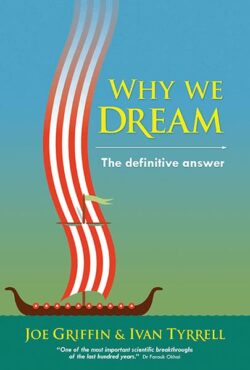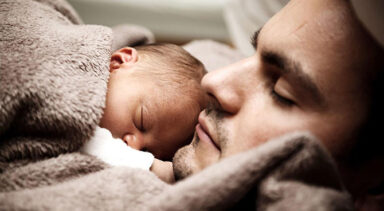Why we evolved to dream
Back in the 1980s, Irish social psychologist Joe Griffin, co-founder of the human givens approach, was fascinated by the age-old puzzle of why we dream. Nature is always efficient in her design, he reasoned, so he set about discovering its true purpose.
His extensive experimental research (carried out over 12 years) resulted in the first comprehensive, scientifically consistent theory of why we evolved to dream – the expectation fulfilment theory of dreaming. This led, through his work with HG co-founder Ivan Tyrrell (one of the first to realise the huge implications of Joe’s research), to powerful human givens understandings impacting on the treatment of depression, addiction, psychological trauma and the early stages of psychosis.
Joe’s discovery was satisfyingly simple, easy to test – and consistent with all scientific dream and sleep research to date, which supports the theory.1,2,3,4,5,6,7,8,9,10
Griffin’s important work has also extended our understandings about the dreaming brain state known as rapid eye movement (REM) sleep, which has to do with a lot more than just dreaming.
You can read more about his work and watch Joe giving a lecture about it here.

Why we dream: the definitive answer
by Joe Griffin and Ivan Tyrrell
The book tells the story of Joe’s discovery and the research findings that corroborate it (later findings are referenced below). It is full of dream descriptions, which are convincingly explained – including a re-analysis of Freud’s famous ‘Dream of Irma’s injection’.
- Schredl, M. (2010) Characteristics and contents of dreams. International Review of Neurobiology. Academic Press, 92, 135–154.
- Blagrove, M. and Pace-Schott, E. F. (2010) Trait and neurobiological correlates of individual differences in dream recall and dream content. International Review of Neurobiology, 92, 155–180.
- Ruby, P. M. (2011) Experimental research on dreaming: state of the art and neuropsychoanalytic perspectives. Frontiers of Psychology, 2, article 286.
- Vallat, R., Chatard, B., Blagrove, M. and Ruby, P. M. (2017) Characteristics of the memory sources of dreams: a new version of the content-matching paradigm to take mundane and remote memories into account. PLoS One, 12, 10, e0185262
- Hutchison, I. C., Pezzoli, S. et al. (2021) Targeted memory reaction in REM but not SWS selectively reduces arousal responses. Communications Biology, doi: 10.1038/s42003-021-01854-3
- Eichenlaub, J. B., van Rijn, E. et al. (Incorporation of recent waking-life experiences in dreams correlates with frontal theta activity in REM sleep. Social Cognitive and Affective Neuroscience, 13, 6, 637–47.
- Walker, M. P. and van der Helm, E. (2009). Overnight therapy? The role of sleep in emotional brain processing. Psychological Bulletin, 135, 5, 731–48.
- van der Helm, E. et al. (2011) REM sleep depotentiates amygdala activity to previous emotional experiences. Current Biology, 21, 2029–32.
- Zohar, D., Tzischinsky, O., Epstein, R. and Lavie, P. (2005) The effects of sleep loss on medical residents’ emotional reactions to work events: a cognitive-energy model. Sleep, 28, 47–54.
- Yoo, S. S., Gujar, N., Hu, P., Jolesz, F. A. and Walker, M. P. (2007) The human emotional brain without sleep – a prefrontal amygdala disconnect. Current Biology, 17, R877–8.




